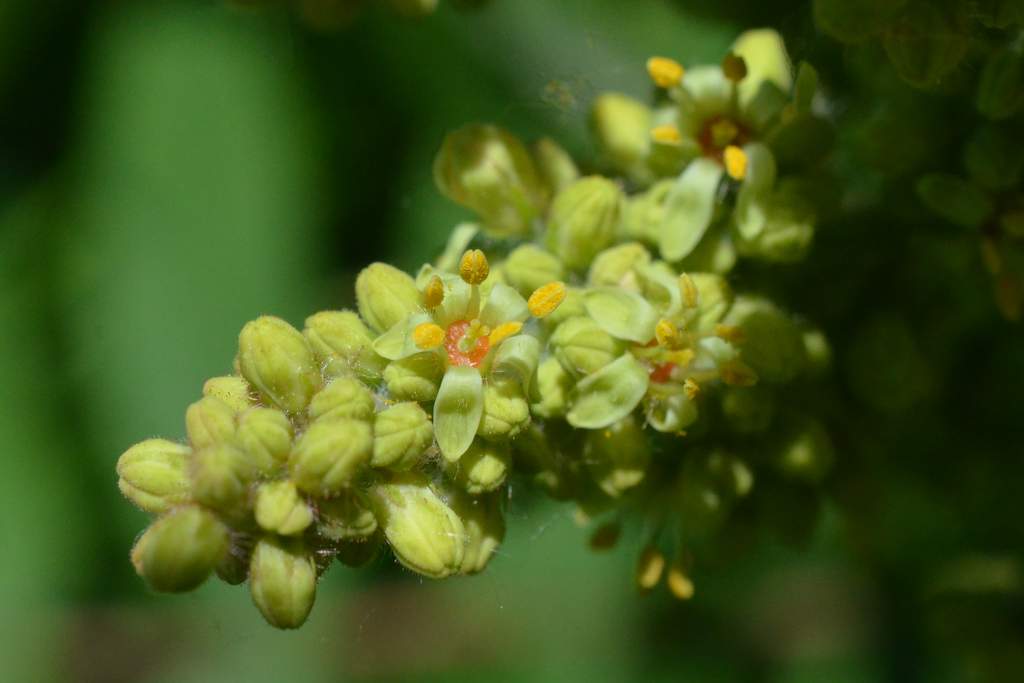
Detail of perfect flower on male panicles of staghorn sumac (Waterfront Park, Burlington)
In the process of photographing trees for what may hopefully one day turn into a field guide to the trees of Vermont, I was photographing staghorn sumac flowers. Sumacs grow in clonal stands shaped like umbrellas, with the oldest stems in the center of growth and new growth radiating out and sprouting from roots in a ring. Sumacs are also dioecious (male and female flowers occur on separate trees), and so the clonal stands are either male or female. Female stands develop the conspicuous red cones of fuzzy fruits that persist through winter and into the following summer, while on male stands, the male inflorescences die back in the summer and leave a withering, hook-shaped claw of a twig through winter. So they’re pretty easy from a distance to distinguish between male and female plants.
Identifying male vs female: There’s a significant male-bias in sumac populations, so chances are the inflorescence you find is male. Male inflorescences are significantly larger than females, with lighter colored branches that have more space between them and that stick out more from the peduncle, the main stem of the inflorescence. I was taking a photo of what I thought was a male inflorescence, but when I looked at the image there were three fused carpels (the pistil) in the center of 5 stamens! This was a perfect flower (perfect flowers have both pistils and stamen). Closer inspection of the female inflorescences showed that they were imperfect. What’s the deal? Why didn’t any of my field guides mention this?!?! I reached out to botanist extraordinaire, Liz Thompson, and she responded by suggesting that while the flowers on male clones are perfect the female parts are vestigial and non-functional. Ahhhh. It makes sense that the clonal stands would functionally be dioecious to ensure cross-pollination since they can already reproduce vegetatively. But why are the female stands imperfect? And why not just have perfect flowers that time when they shed pollen to not coincide with when the pistils ripen? And why don’t my field guides want me to know this? So many questions!




